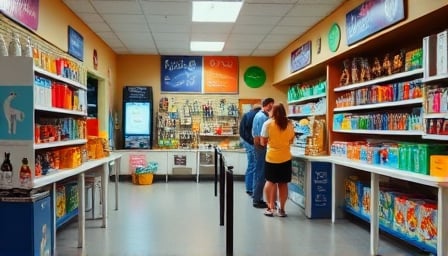Pets at Home Group Plc – Executive Departure and Profit Warning Shake Up the Stock
The London‑listed specialty retailer Pets at Home Group Plc has experienced an unprecedented day of volatility. In the span of a single trading session, the company announced the immediate resignation of Chief Executive Officer Lyssa McGowan and issued a second profit warning in less than two months, prompting a record‑level decline in its share price. The sequence of events has sent shockwaves through the FTSE 250, where Pets at Home has long been a bellwether for the household‑goods sector.
Executive Exit and Immediate Impact
At 08:29 GMT, the company disclosed that CEO Lyssa McGowan would depart with immediate effect. The announcement came without a successor name and was framed as a “strategic reset” for the business. In the same breath, Pets at Home lowered its annual profit outlook, citing “subdued” retail performance and a softer market environment than previously anticipated. The combined effect of an abrupt leadership vacuum and a downgraded earnings forecast generated a sell‑off that eclipsed the 17 % fall seen earlier in the day.
The stock’s intraday swing was the steepest in its history: opening near £232.4, it slumped to a low of £193.9 (a 33 % drop) before closing at £228.1. The 52‑week low, recorded on 12 January 2025 at £193.9, was briefly approached again as investors recalibrated their expectations.
Profit Warning – A Second Blow in Quick Succession
Pets at Home’s latest profit warning is the second in less than two months. The first, issued earlier this month, had already eroded investor confidence, as the retailer’s guidance fell short of market expectations by a significant margin. The second warning reiterates the same narrative: retail sales are under pressure, margins are compressing, and the company’s growth trajectory has slowed.
Analysts at Deutsche Bank, who recently trimmed their price target on the stock, cited the CEO departure as a compounding risk factor. The bank’s revised outlook now reflects a more conservative view of Pets at Home’s ability to navigate an uncertain retail landscape, particularly amid rising input costs and shifting consumer behaviour post‑pandemic.
Market Context and Broader Implications
The FTSE 100 index showed resilience on Thursday, edging higher despite sharp declines in key retail names such as Next and Pets at Home. Gains in select financial and industrial stocks offset losses in household‑goods names, underscoring the sector‑specific nature of the downturn. The Bank of England’s decision to hold rates at this point did little to assuage investor anxiety, as the broader UK economy remains under pressure from inflationary headwinds and supply‑chain constraints.
For Pets at Home, the immediate challenge lies in restoring confidence among shareholders and consumers alike. The company’s business model—anchored in a network of physical stores and an e‑commerce platform—has historically benefited from the pet‑care industry’s resilience. However, the current market dynamics, coupled with an executive void, may impede the retailer’s ability to sustain its recent growth momentum.
Forward‑Looking Assessment
While the short‑term impact on the share price is clear, the long‑term trajectory will hinge on several factors:
- Leadership Transition – The appointment of a capable interim or permanent CEO will be pivotal in re‑energising investor sentiment and steering the company through the current downturn.
- Operational Adjustments – Pets at Home’s ability to streamline costs, optimise its supply chain, and reinforce its omnichannel strategy could mitigate margin pressure.
- Market Recovery – A rebound in consumer confidence and a stabilization of inflationary pressures could revive retail demand, offering a pathway back to profitability.
Investors will need to monitor the company’s forthcoming earnings reports, management commentary, and any strategic initiatives that may signal a turnaround. Until then, the stock remains a high‑volatility play, reflecting the broader uncertainties that continue to challenge the UK retail sector.
